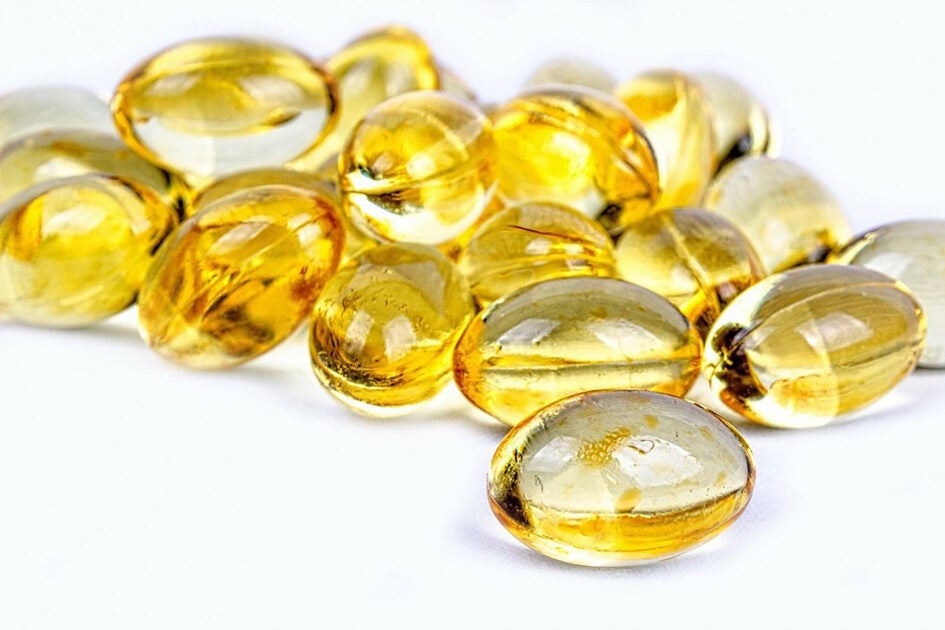January 24, 2020, by Lewis Cantley and Jihye Yun
The discovery and isolation of vitamin C was one of the most important advances in improving human nutrition. Scurvy, a severe vitamin C deficiency disease characterized by weakness, lethargy, easy bruising and bleeding, was particularly problematic for sailors on long voyages during the 16th century, where access to fresh fruits and vegetables was limited. In fact, scurvy was the leading cause of naval deaths between the 16th and 18th centuries, killing more sailors than all battles, storms and other diseases combined. It wasn’t until 1747 that Scottish naval physician James LindExit Disclaimer demonstrated that consuming oranges and lemons cured and prevented scurvy. However, it took scientists nearly two more centuries to identify the nature of the curative substance contained in citrus fruits, now commonly known as vitamin C. The search for this elusive substance ended in 1932 when Albert Szent-GyorgyiExit Disclaimer, a Hungarian biochemist, isolated and identified a 6-carbon carbohydrate, hexuronic acid, as the anti-scurvy factor. Shortly thereafter, Szent-Gyorgyi renamed it “a-scorbic acid”, a reference to its anti-scorbutic properties, and later went on to receive the Nobel Prize in Physiology and Medicine in 1937 for his discoveries.
Today vitamin C is a popular dietary supplement, and due to improved accessibility to fruits, vegetables and vitamin supplements, disability and death from scurvy are rare. However, it is worth noting that a significant number of people even in developed countries are still vitamin C deficient. For example, approximately 7% of the US population has a plasma vitamin C concentration of less than 11 μM, that is considered scurvy. Vitamin C has many essential functions in our body in addition to its well-known role as an antioxidant. Thus, prolonged periods of sub-optimal vitamin C exposure could have adverse health effects, including an increased susceptibility to a plethora of diseases. In fact, the optimal dosage of vitamin C required to maximize its health benefits has been hotly debated ever since its discovery a century ago. Linus Pauling, a world-renowned chemist and two-time Nobel Prize Laureate, strongly advocated that megadose quantities of vitamin C (above 1 g intake per day) would prevent and treat many illnesses including the common cold and heart diseases. However, mainstream medicine has largely ignored or even ridiculed Pauling’s claim. This controversy is still very much alive today.
The controversial history of high-dose vitamin C in cancer treatment
Utilizing high doses of vitamin C as a cancer therapy is no exception to this controversy. Nearly 60 years ago Toronto physician William McCormick observed that cancer patients often presented with severely low levels of vitamin C in their blood and featured scurvy-like symptoms, leading him to postulate that vitamin C might protect against cancer by increasing collagen synthesis. In 1972, extending this theory, Ewan Cameron, a Scottish surgeon, hypothesized that ascorbate could suppress cancer development by inhibiting hyaluronidase, which otherwise weakens the extracellular matrix and enables cancer to metastasize. He began treating terminally ill cancer patients and published a case report of 50 patients in which some of the treated patients benefited from high dose vitamin C.
Encouraged by the result, Cameron teamed up with Linus Pauling to conduct clinical trials involving terminal cancer patients. In 1976, they published a study of 100 patients with terminal cancer treated with ascorbate. Their disease progression and survival rates were compared to 1000 retrospective control patients who were matched with the vitamin C-treated patients regarding age, sex, type of cancer and clinical stage and who were treated by the same physicians in the same hospital, and in the same way except that they did not receive vitamin C. Although the study was not well designed by modern standards, mainly because they lacked the placebo-control group, the results demonstrated that patients treated with vitamin C had improved quality of life and a four-fold increase in their mean survival time. In a follow up study, Cameron and Pauling reported that 22% of vitamin C-treated cancer patients survived for more than one year compared to only 0.4% of control patients. A clinical trial in Japan independently showed a similar result. With these promising outcomes, interest in the potential of vitamin C for cancer therapy grew. However, double-blind randomized clinical trials directed by Charles Moertel of the Mayo Clinic failed to show any positive effects of high dose vitamin C in cancer patients, as reported in two papers in the journal of New England Journal of Medicine. Because the Mayo Clinic’s clinical trials were conducted more rigorously, people trusted the Mayo Clinic’s data and discredited the Cameron-Pauling trials, dampening the enthusiasm for vitamin C as a cancer therapy.
So why did the Pauling and Mayo Clinic trials have different results? There are at least two crucial differences. First, the Mayo Clinic trials abruptly stopped the ascorbate administration, switching to traditional chemotherapy, when the patient developed signs of tumor progression. Thus, the overall median time of vitamin C treatment under the Mayo Clinic trials was only 2.5 months, while the Pauling and Cameron trials treated patients for the duration of the entire study period or as long as 12 years. Secondly, the Mayo Clinic trials administered 10 g of daily ascorbate to patients only orally, while the Cameron and Pauling trials administered their vitamin C both orally and intravenously. This difference in the two dosage routes proved highly consequential.
Rekindling vitamin C cancer therapy: oral vs intravenous administration
Based on studies pioneered by Mark Levine’s group at the NIH in the 2000s, the oral vitamin C doses used in the Mayo Clinic studies would have produced peak plasma concentration of less than 200 μM. In contrast, the same dose given intravenously, as used in the Pauling studies, would produce peak plasma concentrations of nearly 6 mM, more than 25 times higher. When given orally, vitamin C concentration in human plasma is tightly controlled by multiple mechanisms acting together: intestinal absorption, tissue accumulation, renal reabsorption and excretion, and potentially even the rate of utilization. However, when ascorbate is administered intravenously or intraperitoneally the tight controls are bypassed, and pharmacologic millimolar plasma concentrations of vitamin C can easily be achieved. For example, a phase I clinical study revealed that ascorbate concentrations could safely reach 25-30 mM with intravenous infusion of 100 g of vitamin C. In this study, plasma concentrations around 10 mM were sustained for at least 4 hours which, based on preclinical studies, is sufficient to kill cancer cells. Given the fact that cancer patients were only treated with vitamin C orally in the Mayo Clinic studies, the studies do not disprove high dose vitamin C’s efficacy as a cancer treatment.
This new knowledge has rekindled interest and spurred new research into the clinical potential of vitamin C. Consequently, over the past decade, there have been an increased number of phase I/II clinical trials and case reports testing the safety and efficacy of high dose vitamin C as a treatment for various cancer patients as a monotherapy or in combinational therapy. We will not discuss these clinical studies as there are already several reviews on the topic. Virtually all studies show improved quality of life for cancer patients by minimizing pain and protecting normal tissues from toxicity caused by chemotherapy. Additionally, vitamin C showed synergistic effects when combined with radiation and standard chemotherapies. Unfortunately, these studies were not designed as large-scale, randomized controlled trials and thus the efficacy of high dose vitamin C therapy remains to be determined.











